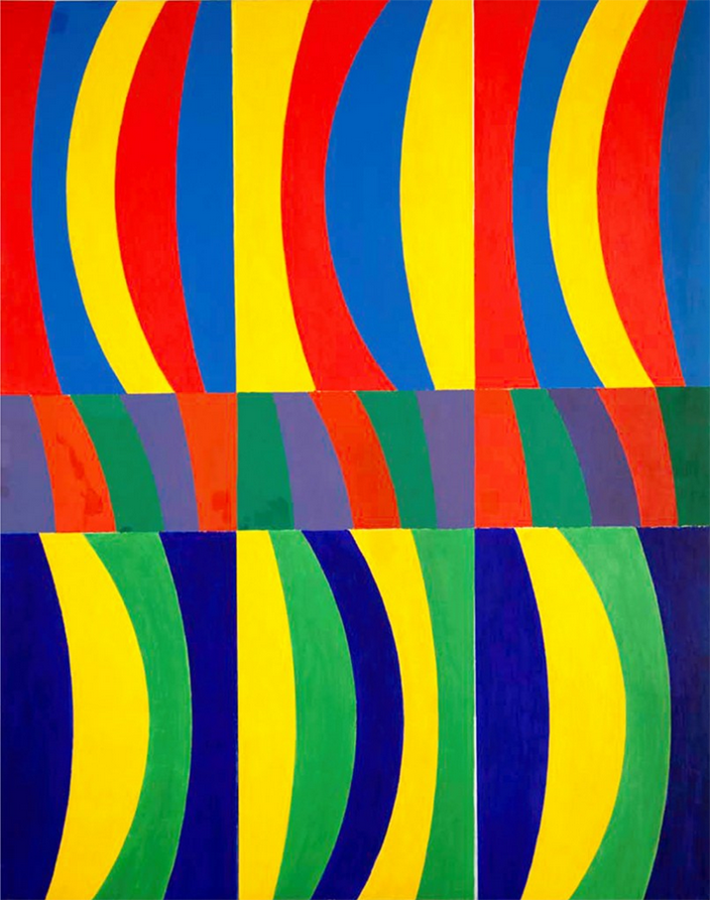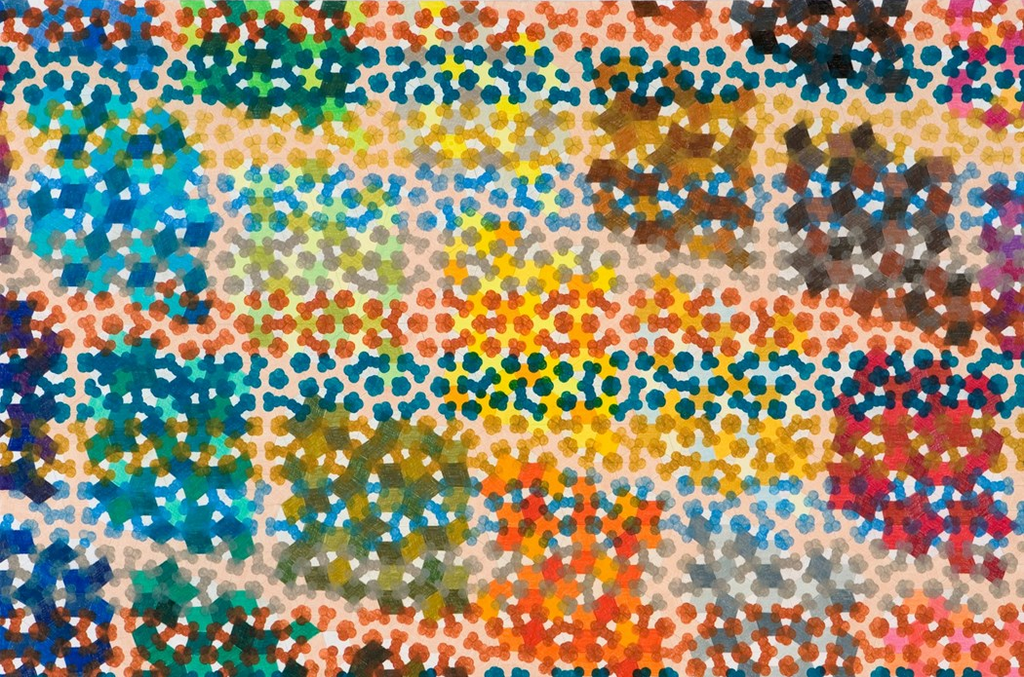Michael Kidner , the artist, was a teacher at the Bath Academy of Art, when I was a student there. In my view, he was one of the most interesting and important artists of the late 20th and early 21st centuries. It was my great luck that I was able to form a friendship with him that lasted over forty years, until his death in 2009. In 2007 he had a one man show at the Flowers East Gallery, London, to which he gave the title “No goals in a quicksand”. I was asked to help with the writing of the catalogue.* One of my contributions was a slightly edited version of a chapter from “Fresh Perspectives on Creativity”, a book I was working on at the time and which is now one of the four books I am currently publishing in installments on the Posts Page of this website. My other main contribution to the catalogue was an introductory piece called “Michael Kidner the man”, which you will find repeated, after Figure 1 below. To complete this Post, I have also included a link to the chapter on Michael (“The big bang, chaos and the butterfly”) and an image of Michael’s last finished painting (Figure 2):

Michael Kidner the man
When considering Michael’s work, it is easy to concentrate attention too much on the science-based ideas and too little on the man and his feelings. As I have got to know him well, I have been impressed by a quality which I am tempted to call ‘naivete’, since it reminds me of a quotation from Matisse: “The effort to see without distortion takes something like courage and this courage is essential to the artist, who has to look at everything as though he saw it for the first time.” Michael looks at mathematically-based systems in this spirit and is not daunted by his shortcomings as a mathematician, of which he is only too aware. Thus, though characterising himself as groping towards an understanding of matters beyond his realistic grasp, Michael does not see this as a reason for abandoning his obsession with mathematical propositions. He sees these as relating to the fundamental mysteries of science and he looks at the evolution of systems, generated by a simple logic, in much the same way as Cézanne must have looked at natural objects, with total concentration and never ending wonder at the seemingly endless layers of novelty that open up before him. In other words, though he works with the ideas of science, he responds to them with the sensibility of an artist, experiencing them with innocent and ever inquisitive eyes. It is his personal and, therefore, quintessentially different visual response that reveals and creates, not only the perceptual excitements but also the metaphors for the human condition that are to be found in his work. Michael works slowly and doggedly. Daily he clambers up to his attic studio where he spends untold hours, apparently oblivious of time and human needs, patiently searching for the key that will give meaning to his latest quest. His explanations of what he is doing are delivered in a slightly hesitant and even seemingly self deprecating manner which completely fails to obscure the steadfast determination to go further which imbues his every word. There is no thought of calling it a day, even at the age of ninety years and even despite his physical handicaps. Cézanne wanted to die painting: one feels that Michael has this same level of commitment.
Michael Kidner: systems and creativity
“The big bang, chaos and the butterfly” Chapter 8 of “Fresh Insights into Creativity”

_________________________
* A version of Michael’s catalogue was later published as: Pratt, Francis. “Michael Kidner The Man”, Flowers East 2007.
_________________________
- Playful fancies as a stimulus to creativity
- An inspirational story: a child draws a potato
- The case for being a flat-earther
- The nature of truth
- Tapies advocates playing games
- Cézanne fall short
- False confidence
- Self deception
- Free will and determinism
- Abstract and Constructivist: some definitions
Other Posts from “Fresh Insights into Creativity”
List of all Posts so far
Got to top
* Pratt Francis. Michael Kidner The Man “No Goals In Quicksand, Exhibition Catalogue (Flowers East 2007)
Good reading. His approach and how he pursued his art as he did opens an inquiry into art, feelings, and science for me, as well as for others. I am inspired by his quest.
He was an amazing person. Working humbly as he tirelessly continued to research and evolve. Thank you for sharing this with us. I feel his working practice is an inspiration to any artist, working in any manner.
A very interesting read on Kidner, Francis. Thank you for sharing both his work & your insights about it! What I find quite interesting here, at least upon first read, is the distinction between “order” & “chaos,” and “abstraction” & “construction.” We seem to be battling these forces continually, in life, in art, in science. However, I’m not entirely clear how abstraction & construction differ. I feel I am constantly engaged in both when making a painting, and perhaps this is exactly the point. I abstract from the motif and construct onto the canvas. Perhaps this is the yin/yang of painting. One quote that I am reminded of after reading your article comes from my former Ph.D. professor (since passed) who always noted how “the restrictive is generative.” I’ve adopted this dictum as a mantra, and it helps me navigate the turbulent waters of life, both in order and in chaos.
Nice to have the background filled in to many childhood memories and unasked questions answered!!!
Very thought-provoking….inspirational work ethic…